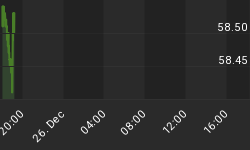After the financial crisis of 2007-2009 and while the SP-500 was still falling, AAPL was starting to show signs of strength. As the SP-500 bottomed in early March of 2009, AAPL had been readily moving in a sideways pattern showing signs of accumulation. The week of the actual bottom in the SP-500, AAPL made a higher low showing signs of strength in comparison to the over all market represented by the SP-500.
During the multi-year bull market that started in March of 2009, AAPL lead the way to the upside. During this period, AAPL went from 82.5 to 705.07. That is a 750% return in 3.5 years! During this period AAPL was the darling of Wall Street to the point that every institutional fund was long AAPL.

Chart 1
Let's fast forward to the present. Since September of 2012, AAPL has been falling while the SP-500 continued its march higher. As you can see at point A, on chart 1, the SP-500 made an all time high while AAPL made a lower high. This is very important. It is telling us that AAPL is weaker in relation to the overall market. To be a successful investor in a bull market, you want to own the strongest stocks; the ones that are out performing the market not the ones that are offering inferior returns in relation to the SP-500.

Chart 2
Recently, AAPL made a 50% retracement of the down leg from the September of 2012 high to the June of 2013 low and turned back down as seen at point B on chart 2. Not a good sign. Furthermore, last week AAPL had its largest weekly bar down in months while volume doubled the weekly average, as shown at point C. Also, it's important to highlight that the close for the week was near the low and below the 30 Week MA.

Chart 3
Based on AAPL recent action, we can project that a test of the June of 2013 low is very likely at 388, point D on chart 3. If this level fails to hold, T1 would be the most likely target for AAPL at 300. Finally, if the current stock market bubble pops, 200 would not be unconceivable.
Summary: The projected weakness in AAPL can be a glimpse into the future of what awaits the SP-500. Just the fact that AAPL is 12% of the Nasdaq, and that most institutional money is still long on AAPL should make you cautious. Why? Because when the large players start to unwind their AAPL positions the domino effect will ripple through the overall market.
As always, I want to emphasize that charts don't predict the future, but they tell you how most participants are positioned. Knowing this enables you to take advantage of the opportunities that the market presents. What the above charts are showing is that there is a higher probability that AAPL has entered a long-term down trend and it is probable that the overall market will follow.















